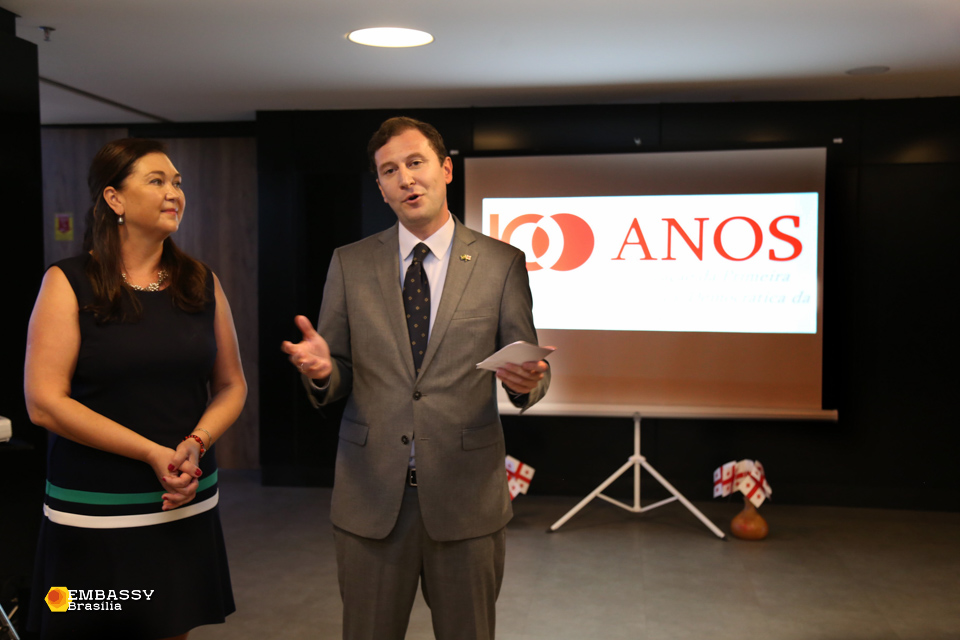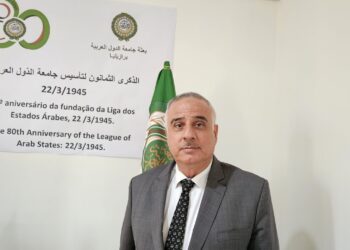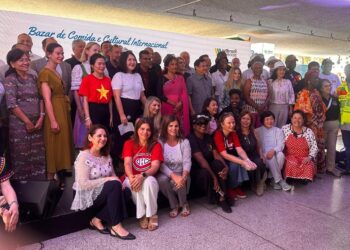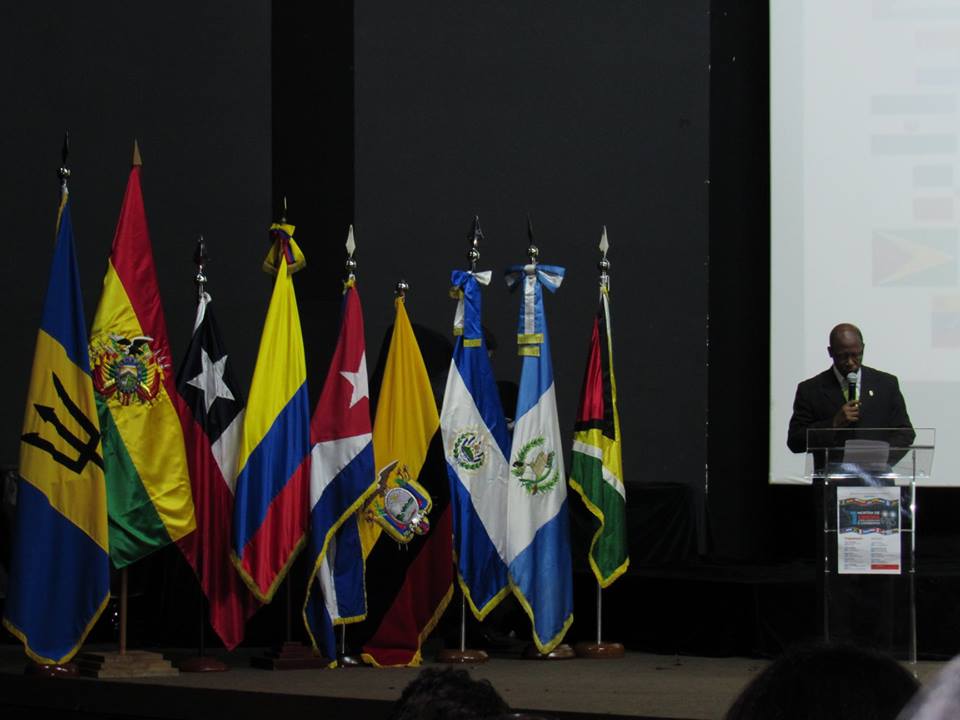The Three Writing Systems of the Georgia Alphabet, Unesco’s Intangible Cultural Heritage of Humanity, has been shown on display at the CCBB
Súsan Faria
Fotos: Eliane Loin



The alphabet that prevails today in Georgia is the Mkhedruli. The other two – Nuskhuri and Asomtavruli – are more interested in scholars and to decipher historical documents. During the ceremony today at the CCBB, a video explaining letters from the Mkhedruli was presented. Then a video was shown with dancers doing choreographies around modern monuments of the country. The exposure of the pictures of the alphabet was only open yesterday (24).
Regina Kelin de Souza Cerqueira, Head of the Communication Department of the CCBB, said that the entity is renewing partnerships with the embassies. “We have our space open to receive all kinds of artistic manifestation, theater, cinema, plastic arts and writing that is also culture,” he said. He invited the participants to visit other spaces of the Cultural Center such as the Museum, exhibitions and films.

The knowledge and experience of the manufacture and production of this wine are transmitted by families, neighbors, friends and relatives. Everyone participates in the activities of harvesting and preparation of the drink. Children learn how to care for grapes, press grapes, ferment wine, collect clay, make and use ovevris.
Exposição celebra centenário de independência da Geórgia
A Geórgia – país da Europa Oriental, cheio de montanhas e que faz divisa com a Rússia, Turquia, Armênia, Azerbaijão e o mar Negro – está completando 100 anos de emancipação. Ficou independente em 26 de maio de 1918, após a revolução Russa. Em Brasília, a data foi comemorada nesta quinta-feira, 24, com uma exposição de quadros com a escrita georgiana, no hall próximo ao Museu do Centro Cultural Banco do Brasil (CCBB).
Na ocasião, o embaixador David Solomonia lembrou o centenário da Geórgia e falou sobre a escrita georgiana, cujo alfabeto possui três variedades, cada uma com características independentes e distinções culturais e funções sociais. Essa escrita passou por uma longa evolução, respondendoaos desafios de diferentes épocas. As três variedades do alfabeto foram desenvolvidas em diferentes estágios. Em 2015, o dossiê “Cultura Viva dos Três Sistemas de Escrita do Alfabeto da Geórgia” foi apresentado à Unesco pelo governo daquele país e, em 2016, essa escrita foi considerada Patrimônio Cultural Imaterial da Humanidade.

Regina Kelin de Souza Cerqueira, Chefe da Assessoria de Comunicação do CCBB, disse que a entidade está renovando parcerias com as embaixadas. “Temos nosso espaço aberto para receber todo tipo de manifestação artística, teatro, cinema, artes plásticas e da escrita que também é cultura”, afirmou. Convidou os presentes a conhecer outros espaços do Centro Cultural como o Museu, as exposições e filmes.
Vinhos– Doces, salgados e vinhos da Geórgia foram servidos aos convidados. Um dos vinhos mais famosos do país é o Qvevri, inscrito em 2013, na lista do Patrimônio Cultural Imaterial da Humanidade da Unesco.
O método tradicional de se fazê-lo é praticado em todo o país, particularmente nas aldeias, onde variedades únicas de uvas são cultivadas. O Qvevri é um recipiente de barro em forma de ovo usado para produzir, envelhecer e armazenar o vinho.
O conhecimento e a experiência da manufatura e produção desse vinho são transmitidos por famílias, vizinhos, amigos e parentes. Todos participam das atividades de colheita e preparo da bebida. As crianças aprendem como cuidar das vinhas, pressionar uvas, fermentar vinho, coletar argila, fazer e usar o ovevris.
A Geórgia tem 25 anos de parcerias com o Brasil. Embaixadores – especialmente do Leste Europeu – representantes do corpo diplomático, do CCBB e jornalistas estiveram presentes na abertura da exposição da Escrita Georgiana.
Fonte: Embaixada da Geórgia em Brasília

















